Are you a digital nomad looking to streamline your remote work and travel experience?
In today’s fast-paced world, having the right apps can make all the difference. Whether you’re managing projects, booking flights, or staying connected with loved ones, there’s an app for that!
According to a recent survey, 85% of digital nomads rely on apps to stay productive and organized. Let’s dive into the best apps for digital nomads in 2024 that will help you stay on top of your game, no matter where you are in the world.
Table of Contents
Best Productivity and Project Management Apps for Digital Nomads

Alright, let’s dive into the world of productivity and project management apps! As a digital nomad, I’ve tried my fair share of tools to keep my work organized and on track. Some have been lifesavers, while others… well, let’s just say they didn’t make the cut. Here are some of my top picks, along with a few personal anecdotes and tips to help you make the most of these apps.
Trello: The Visual Organizer
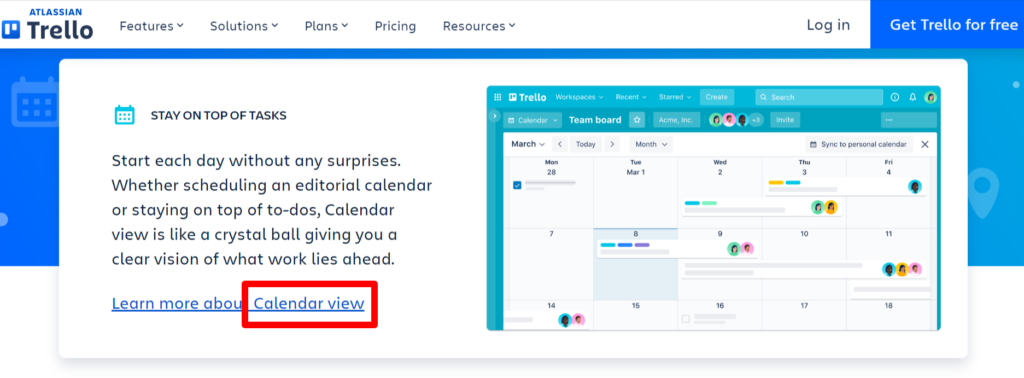
Trello is like a digital corkboard where you can pin all your tasks and projects. I remember the first time I used Trello; it was a game-changer. I was juggling multiple freelance projects and struggling to keep track of deadlines. Trello’s boards, lists, and cards made it so easy to visualize my workflow. I could move tasks from “To Do” to “In Progress” to “Done” with a simple drag-and-drop. One tip: use labels and due dates religiously. They help you prioritize tasks and avoid last-minute scrambles.
Asana: The Task Master
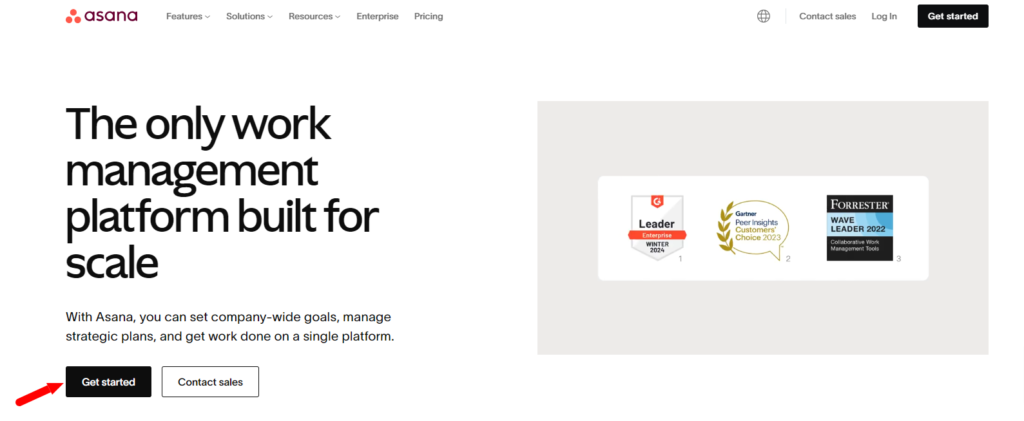
Asana is another fantastic tool for project management. It’s a bit more robust than Trello, which can be both a blessing and a curse. I once tried to set up a project in Asana without any prior experience and ended up feeling overwhelmed by all the features. But once I got the hang of it, I realized how powerful it is. You can create tasks, subtasks, set deadlines, and even assign tasks to team members. If you’re working with a team, Asana’s collaboration features are top-notch. Just remember to keep your projects organized; it’s easy to get lost in the details.
Evernote: The Digital Notebook

Evernote is my go-to app for note-taking. Whether I’m jotting down ideas for a blog post or keeping track of meeting notes, Evernote has me covered. One time, I lost my physical notebook during a trip, and Evernote saved the day. I had all my important notes backed up and accessible from my phone. My advice: use tags to categorize your notes. It makes searching for specific information a breeze.
Slack: The Communication Hub
Slack is essential for staying in touch with your team. It’s like a virtual office where you can chat, share files, and even make video calls. I remember a project where our team was spread across three different time zones. Slack’s channels and direct messages kept us all connected and on the same page. Pro tip: set up channels for different projects or topics to keep conversations organized. And don’t forget to use the “Do Not Disturb” feature when you need some focused work time.
Zoom: The Meeting Room
Zoom has become synonymous with virtual meetings. Whether it’s a quick check-in with a client or a full-blown team meeting, Zoom’s video conferencing features are reliable and easy to use. I once had to give a presentation to a client while traveling, and Zoom’s screen sharing feature made it seamless. Just make sure you have a stable internet connection and test your audio and video settings before the call.
Microsoft Teams: The All-in-One Solution
Microsoft Teams is a powerhouse for collaboration, especially if you’re already using Office 365. It combines chat, video calls, file sharing, and project management in one platform. I used Teams for a large-scale project, and it was incredibly efficient. We could collaborate on documents in real-time and keep all our communications in one place. One thing to watch out for: Teams can be a bit resource-heavy, so make sure your device can handle it.
In the end, the best productivity and project management app is the one that fits your workflow and helps you stay organized. Whether you prefer the visual simplicity of Trello, the robust features of Asana, or the all-in-one approach of Microsoft Teams, there’s an app out there for you. Give these tools a try, and don’t be afraid to experiment until you find the perfect fit. Happy organizing!
Best Communication and Collaboration Apps for Digital Nomads
Alright, let’s chat about the best communication and collaboration apps for digital nomads! These tools are essential for staying connected and working efficiently, especially when you’re part of a remote team. I’ve had my fair share of experiences with these apps, and I’ll share some personal stories and tips to help you get the most out of them.
Slack: The Virtual Office
Slack is like the heartbeat of remote teams. It’s where all the action happens. I remember when I first joined a fully remote team, Slack was our main hub. We had channels for everything: projects, random chit-chat, and even a #pets channel where we shared pictures of our furry friends. One thing I learned quickly was the importance of setting boundaries. Slack can be overwhelming with constant notifications. My tip? Use the “Do Not Disturb” feature during your focused work hours. Also, don’t be afraid to mute channels that aren’t immediately relevant to your work.
Zoom: The Go-To for Meetings
Zoom has become a staple for virtual meetings. Whether it’s a quick catch-up or a detailed presentation, Zoom’s features make it easy to connect. I once had to present a project update to a client while traveling. The hotel Wi-Fi was spotty, and I was nervous about the call dropping. Thankfully, Zoom’s stability came through, and the screen sharing feature worked flawlessly. A little advice: always test your audio and video settings before the call, and have a backup plan (like a phone hotspot) just in case your internet fails.
Microsoft Teams: The All-in-One Solution
Microsoft Teams is a powerhouse, especially if you’re already using Office 365. It combines chat, video calls, file sharing, and project management in one platform. I used Teams for a large-scale project, and it was incredibly efficient. We could collaborate on documents in real-time and keep all our communications in one place. One thing to watch out for: Teams can be a bit resource-heavy, so make sure your device can handle it. Also, take advantage of the integration with other Microsoft apps like OneNote and SharePoint for a seamless workflow.
Google Meet: Simple and Effective
Google Meet is another great option for video calls, especially if you’re already using Google Workspace. It’s straightforward and integrates well with Google Calendar. I remember a time when I had back-to-back meetings scheduled, and Google Meet’s integration with Calendar saved me. I could join meetings with a single click, and the automatic meeting reminders were a lifesaver. My tip: use the “Present” feature to share your screen and keep your presentations smooth and professional.
Trello: For Visual Collaboration
While Trello is primarily a project management tool, its collaboration features are worth mentioning. I once worked on a content creation project where we used Trello to brainstorm ideas, assign tasks, and track progress. The visual nature of Trello’s boards made it easy to see where everything stood at a glance. If you’re a visual thinker like me, Trello can be a fantastic tool for collaboration. Just make sure to keep your boards organized and use labels and due dates to stay on top of tasks.
Whether you prefer the chat-centric approach of Slack, the comprehensive features of Microsoft Teams, or the simplicity of Google Meet, there’s an app out there for you. Don’t be afraid to experiment and find what works best for your team. And remember, the key to effective communication is not just the tools you use, but how you use them.
Best Travel and Accommodation Apps for Digital Nomads
These tools are lifesavers for digital nomads, helping us find the best deals, stay organized, and make our travels as smooth as possible. Here are some of my top picks.
Skyscanner: Your Flight Finder
Skyscanner is my go-to app for finding the best flight deals. I remember planning a trip to Bali and being overwhelmed by the number of flight options. Skyscanner made it easy to compare prices from different airlines and find the most affordable option. One tip: use the “Everywhere” search feature if you’re flexible with your destination. It shows you the cheapest flights to various locations, which can be a fun way to discover new places.
Airbnb: Home Away from Home

Airbnb is a staple for finding unique accommodations around the world. I’ve stayed in everything from cozy apartments in Tokyo to beachside villas in Thailand. One time, I booked a charming little cottage in the French countryside, and it turned out to be one of the best stays I’ve ever had. My advice: read the reviews carefully and communicate with the host before booking to ensure the place meets your needs. Also, look for listings with Superhost status for a more reliable experience.
Google Maps: Your Navigation Companion
Google Maps is indispensable for navigating new cities. Whether you’re walking, driving, or using public transport, this app has you covered. I once got lost in the winding streets of Venice, but Google Maps helped me find my way back to my Airbnb without any hassle. A handy tip: download offline maps of the area you’ll be visiting. This way, you can navigate even without an internet connection.
Booking.com: More Than Just Hotels
Booking.com is another excellent app for finding accommodations. It offers a wide range of options, from hotels to hostels to vacation rentals. I used it to book a last-minute hotel in Amsterdam, and the process was seamless. One feature I love is the ability to filter results based on your preferences, such as free Wi-Fi, breakfast included, or pet-friendly options. This makes it easy to find exactly what you’re looking for.
TripIt: Your Travel Itinerary Organizer

TripIt is a fantastic app for keeping all your travel plans in one place. I used to struggle with managing flight details, hotel reservations, and car rentals, but TripIt changed that. You simply forward your confirmation emails to TripIt, and it creates a master itinerary for you. One time, I had a multi-leg trip with several flights and hotel stays, and TripIt kept everything organized and easily accessible. My tip: use the Pro version if you travel frequently; it offers additional features like real-time flight alerts and seat tracking.
PackPoint: The Ultimate Packing List

PackPoint is a lifesaver when it comes to packing. It creates a customized packing list based on your destination, the length of your trip, and planned activities. I once forgot to pack a rain jacket for a trip to London, and let’s just say I learned my lesson the hard way. With PackPoint, you can avoid such mishaps. Just input your trip details, and it generates a list of items you’ll need. You can even share your packing list with travel companions to ensure everyone is prepared.
Couchsurfing: For the Adventurous Traveler

Couchsurfing is perfect for those who love meeting new people and experiencing local culture. I used Couchsurfing during a trip to Barcelona and stayed with a local host who showed me around the city and introduced me to hidden gems I would have never found on my own. It’s a great way to save money on accommodation and make new friends. Just be sure to read host profiles and reviews carefully to ensure a safe and enjoyable experience.
In conclusion, the right travel and accommodation apps can make your digital nomad lifestyle much easier and more enjoyable. Whether you’re looking for the best flight deals, unique places to stay, or ways to stay organized, these apps have got you covered. Give them a try, and you’ll be well on your way to a smoother, more efficient travel experience. Safe travels!
Language and Cultural Immersion: Break Down Barriers
Alright, let’s dive into the fascinating world of language and cultural immersion! As a digital nomad, breaking down language barriers and immersing yourself in local cultures can be incredibly rewarding. Here are some of my top picks for apps that can help you connect with people, learn new languages, and truly experience the richness of different cultures.
Duolingo: Fun and Engaging Language Learning

Duolingo is a fantastic app for learning new languages in a fun and engaging way. I remember starting my Spanish journey with Duolingo while traveling through South America. The app’s gamified approach made it easy to stay motivated. Each lesson felt like a mini-game, and I found myself looking forward to my daily practice. One tip: set a daily goal and stick to it. Even just 10 minutes a day can make a big difference over time.
Babbel: Practical Language Skills

Babbel is another excellent language learning app, especially if you’re looking for practical, real-world language skills. I used Babbel to brush up on my French before a trip to Paris. The app’s focus on conversational skills and real-life scenarios was incredibly helpful. One time, I used phrases I learned from Babbel to navigate a tricky situation at a French bakery. My advice: take advantage of Babbel’s speech recognition feature to practice your pronunciation. It can be a bit challenging at first, but it’s worth the effort.
HelloTalk: Language Exchange with Natives
HelloTalk is a unique app that connects you with native speakers for language exchange. I used HelloTalk to practice my Japanese while living in Tokyo. The app allows you to chat with native speakers, exchange voice messages, and even make video calls. One of my favorite experiences was a language exchange with a local who introduced me to some hidden gems in the city. My tip: be open to making mistakes and learning from them. The community is generally very supportive and eager to help.
Tandem: Find a Language Partner
Tandem is similar to HelloTalk but with a focus on finding a dedicated language partner. I found a wonderful language partner from Italy through Tandem, and we would practice English and Italian together. The app’s matching algorithm helps you find partners based on your language goals and interests. One piece of advice: set regular times for your language exchanges to build a consistent practice routine. It also helps to discuss your learning goals with your partner so you can support each other effectively.
Culture Trip: Discover Local Experiences
Culture Trip is an app that helps you discover unique local experiences and cultural insights. I used Culture Trip extensively during my travels in Europe. The app offers articles, guides, and recommendations from locals, making it easy to find off-the-beaten-path attractions and activities. One memorable experience was a traditional cooking class in Barcelona that I found through Culture Trip. My tip: explore the app’s curated lists and guides for each destination. They often highlight lesser-known spots that you won’t find in typical travel guides.
Meetup: Connect with Local Communities
Meetup is a fantastic app for connecting with local communities and attending events. I used Meetup to join language exchange groups and cultural events in various cities. One time, I attended a salsa dancing meetup in Mexico City, which was a blast and a great way to practice my Spanish. My advice: don’t be shy about joining groups and attending events. It’s a wonderful way to meet new people, learn about the local culture, and practice your language skills in a social setting.
Google Translate: Your Pocket Translator
Google Translate is an essential tool for breaking down language barriers on the go. I can’t count the number of times Google Translate has saved me in tricky situations. Whether it’s reading a menu, asking for directions, or having a basic conversation, this app is incredibly handy. One tip: use the camera feature to translate text in real-time. It’s perfect for translating signs, menus, and other written materials.
Language and cultural immersion apps can greatly enhance your travel experiences and help you connect with people on a deeper level. Whether you’re learning a new language, discovering local experiences, or connecting with communities, these apps have got you covered. Give them a try, and you’ll be well on your way to breaking down barriers and enriching your understanding of the world.
Remote Work Essentials: Office Tools on the Go
Working remotely has its perks, but it also comes with its own set of challenges. Having the right tools can make all the difference in staying productive and connected. Here are some essential office tools that can help you work efficiently from anywhere.
Google Workspace: Collaborate on Documents, Spreadsheets, and More

Google Workspace is a powerhouse for remote collaboration. I remember the first time I used Google Docs for a team project; it was a revelation. No more emailing documents back and forth! With Google Workspace, you can work on documents, spreadsheets, and presentations in real-time with your team. One tip: use the commenting feature to leave feedback and suggestions directly on the document. It keeps the conversation focused and organized. Plus, Google Drive’s cloud storage ensures you can access your files from any device.
Canva: Create Stunning Visuals for Your Projects
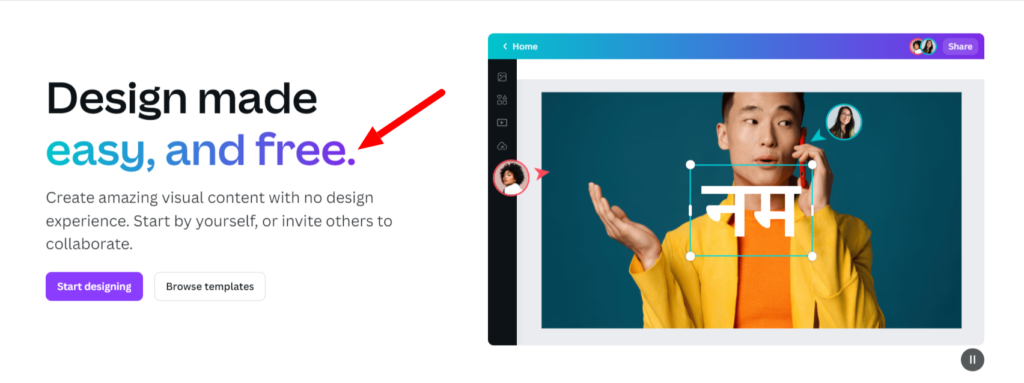
Canva is a lifesaver for creating professional-looking graphics without needing a design degree. I once had to create a presentation on short notice, and Canva’s templates made it a breeze. You can design everything from social media posts to infographics with its intuitive drag-and-drop interface. My advice: explore the vast library of templates and elements to find inspiration. Canva Pro offers additional features like brand kits and premium templates, which can be worth the investment if you create visuals regularly.
Grammarly: Polish Your Writing Anywhere, Anytime

Grammarly is like having a personal editor at your fingertips. Whether you’re drafting an email, writing a blog post, or working on a report, Grammarly helps you catch grammar mistakes, improve your writing style, and ensure your text is clear and concise. I remember a time when I sent out an important email without proofreading it first—big mistake. Grammarly has saved me from countless embarrassing typos since then. One tip: use the browser extension to get real-time writing suggestions across all your online platforms.
Calendly: Seamless Scheduling Across Time Zones
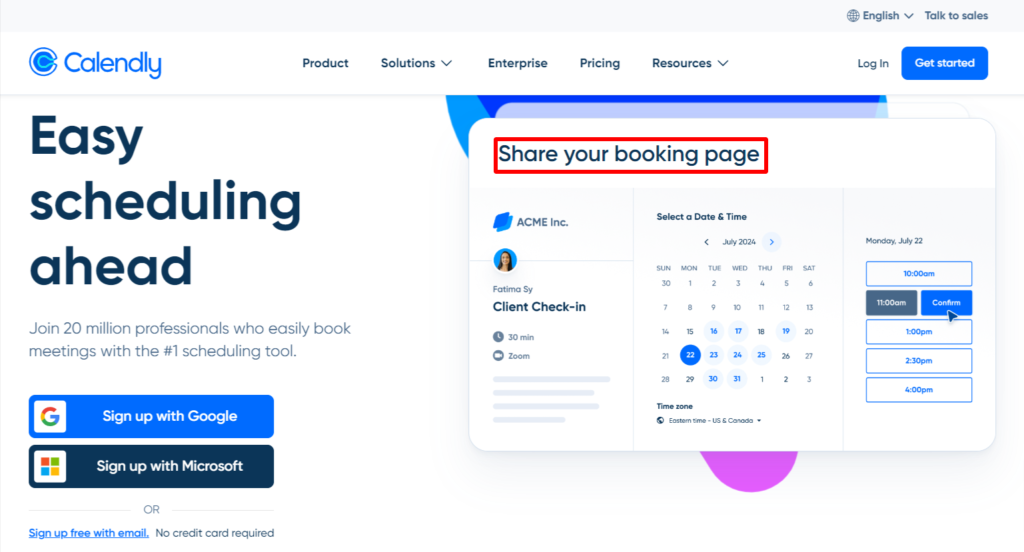
Calendly is a game-changer for scheduling meetings, especially when working with a global team. I used to spend so much time going back and forth trying to find a suitable meeting time. With Calendly, you can set your availability, and others can book time slots that work for them. It automatically adjusts for different time zones, which is a huge plus. My advice: integrate Calendly with your calendar app (like Google Calendar or Outlook) to avoid double bookings and streamline your scheduling process.
Having the right office tools can significantly enhance your remote work experience. Google Workspace, Canva, Grammarly, and Calendly are just a few of the essential apps that can help you stay productive, organized, and connected. Give them a try, and you’ll likely find that your workflow becomes smoother and more efficient. Happy remote working!
Best Finance and Budgeting Apps for Digital Nomads
Alright, let’s dive into the world of finance and budgeting apps! Managing your finances on the go is crucial for digital nomads, and these apps can make it a lot easier. Here are some of my top picks, along with personal stories and tips to help you get the most out of them.
Revolut: The All-in-One Financial App
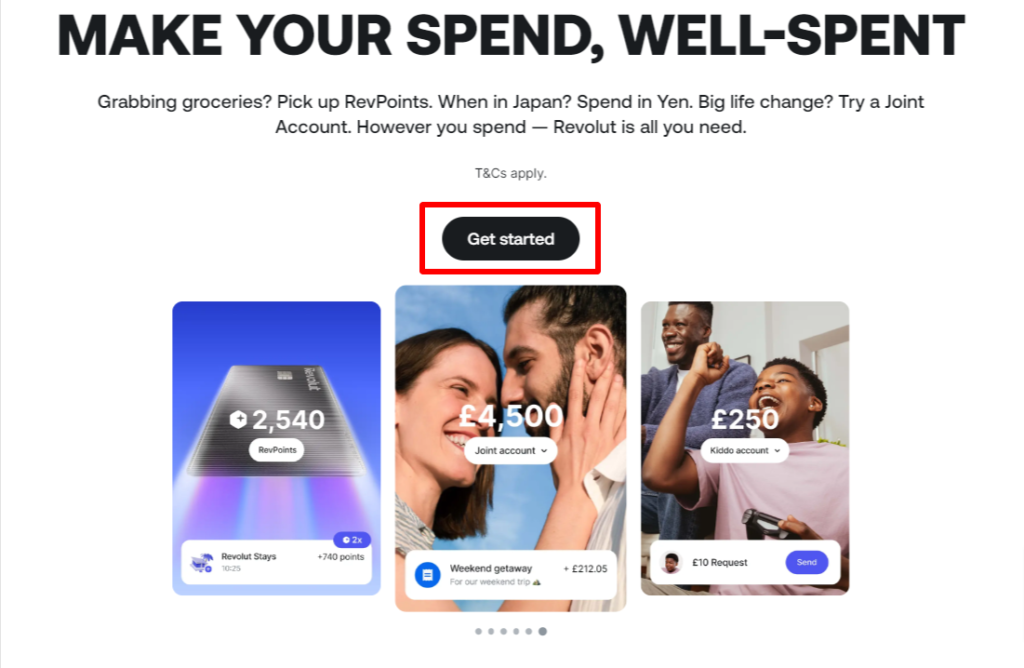
Revolut is a fantastic app for managing your money, especially if you’re dealing with multiple currencies. I remember the first time I used Revolut during a trip to Europe. I was able to exchange currencies at competitive rates and track my spending in real-time. One of the best features is the ability to create virtual cards for online purchases, which adds an extra layer of security. My tip: take advantage of the budgeting feature to set spending limits and track your expenses by category. It really helps you stay on top of your finances.
Wise (formerly TransferWise): Low-Cost International Transfers

Wise is my go-to app for sending money internationally. The low fees and transparent exchange rates are a huge plus. I once had to send money to a friend in Australia, and Wise made the process quick and painless. The app shows you exactly how much the recipient will get, so there are no surprises. A little advice: link your bank account to Wise for the best rates and fastest transfers. It’s also worth setting up rate alerts if you frequently send money abroad.
Expensify: Expense Management Made Easy

Expensify is a lifesaver for keeping track of receipts and managing expenses. I used it extensively during a business trip to Singapore. Instead of stuffing my wallet with paper receipts, I simply snapped photos of them with the app. Expensify automatically scanned the details and categorized the expenses. One tip: use the SmartScan feature to save time and reduce manual entry. If you’re traveling for work, Expensify’s integration with accounting software can streamline your expense reporting process.
YNAB (You Need A Budget): Proactive Budgeting

YNAB is all about giving every dollar a job. It’s a bit different from other budgeting apps because it focuses on proactive budgeting. I started using YNAB when I wanted to be more intentional with my spending. The app encourages you to plan for future expenses and save for unexpected costs. One time, I used YNAB to save for a big trip to South America, and it made a huge difference. My tip: take advantage of YNAB’s educational resources and community forums. They offer great advice and support for getting the most out of the app.
Splitwise: Simplifying Shared Expenses
Splitwise is perfect for managing shared expenses, whether you’re traveling with friends or splitting rent with roommates. I used Splitwise during a group trip to Thailand, and it made splitting costs a breeze. You can create groups, add expenses, and the app calculates who owes what. One handy feature is the ability to settle up via PayPal or Venmo directly from the app. My advice: keep the expenses updated in real-time to avoid confusion and ensure everyone is on the same page.
In conclusion, the right finance and budgeting apps can make managing your money as a digital nomad much simpler and more efficient. Whether you’re tracking expenses, sending money internationally, or budgeting for future goals, these apps have got you covered. Give them a try, and you’ll be well on your way to financial peace of mind. Happy budgeting!
Networking and Professional Growth: Build Your Global Career
Building a global career involves leveraging the right tools to network effectively and continuously grow professionally. Here are some top apps and platforms that can help you expand your professional network and enhance your skills.
LinkedIn: Network with Professionals Worldwide
LinkedIn is the world’s largest professional network, with over 1 billion members1. It’s an essential tool for connecting with professionals across various industries, finding job opportunities, and showcasing your professional achievements. I remember using LinkedIn to connect with a former colleague, which led to a new job opportunity. My tip: keep your profile updated and actively engage with your network by sharing insights and commenting on posts. This helps you stay visible and relevant in your industry.
Shapr: Networking App Designed for Digital Nomads
Shapr is a unique networking app that uses an algorithm to match you with professionals who share similar interests and goals2. It’s perfect for digital nomads looking to build meaningful connections. I once used Shapr while traveling in Europe and met a fellow content strategist who became a valuable collaborator. My advice: be proactive in starting conversations and follow up with your matches to build lasting relationships.
Skillshare: Learn New Skills from Anywhere in the World

Skillshare is an online learning community with thousands of classes on topics ranging from graphic design to entrepreneurship3. It’s a fantastic resource for continuous learning and skill development. I took a course on digital marketing that significantly improved my strategies and opened up new opportunities. My tip: explore different classes and participate in projects to apply what you’ve learned. Skillshare’s community aspect also allows you to connect with other learners and instructors.
Eventbrite: Find and Attend Professional Events Globally
Eventbrite is a platform that helps you discover and attend professional events, both online and in-person4. From conferences to workshops, Eventbrite offers a wide range of events that can help you expand your network and gain new insights. I once attended a virtual marketing summit through Eventbrite, which provided valuable knowledge and networking opportunities. My advice: regularly check Eventbrite for events in your field and make the most of the networking opportunities they offer.
Leveraging tools like LinkedIn, Shapr, Skillshare, and Eventbrite can significantly enhance your networking efforts and professional growth. By actively engaging with these platforms, you can build a robust global network, continuously learn new skills, and stay ahead in your career. Happy networking and learning!
Best Health and Wellness Apps for Digital Nomads
Staying healthy on the road is crucial for digital nomads, and these apps can help you maintain your well-being no matter where you are. Here are some of my top picks, along with personal stories and tips to help you get the most out of them.
MyFitnessPal: Your Personal Nutritionist

MyFitnessPal is a fantastic app for tracking your diet and exercise. I started using it when I realized I needed to be more mindful of my eating habits while traveling. It’s easy to log meals, track calories, and monitor your nutrient intake. One time, I was in Italy, indulging in all the delicious pasta and gelato. MyFitnessPal helped me keep track of my portions and stay within my calorie goals. My tip: use the barcode scanner to quickly log packaged foods and take advantage of the recipe feature to input homemade meals.
Headspace: Mindfulness and Meditation
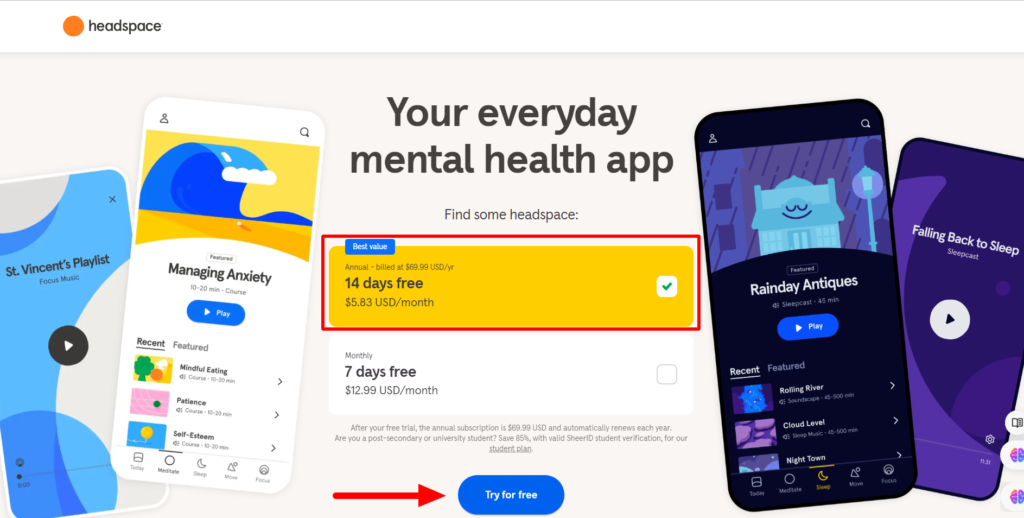
Headspace is my go-to app for mindfulness and meditation. Traveling can be stressful, and Headspace offers guided meditations that help me stay grounded. I remember a particularly hectic travel day with multiple flight delays. I used Headspace’s “SOS” meditation to calm my nerves and regain focus. One piece of advice: start with the basics course if you’re new to meditation. It provides a great foundation and helps you build a consistent practice.
YogaGlo: Yoga Anytime, Anywhere
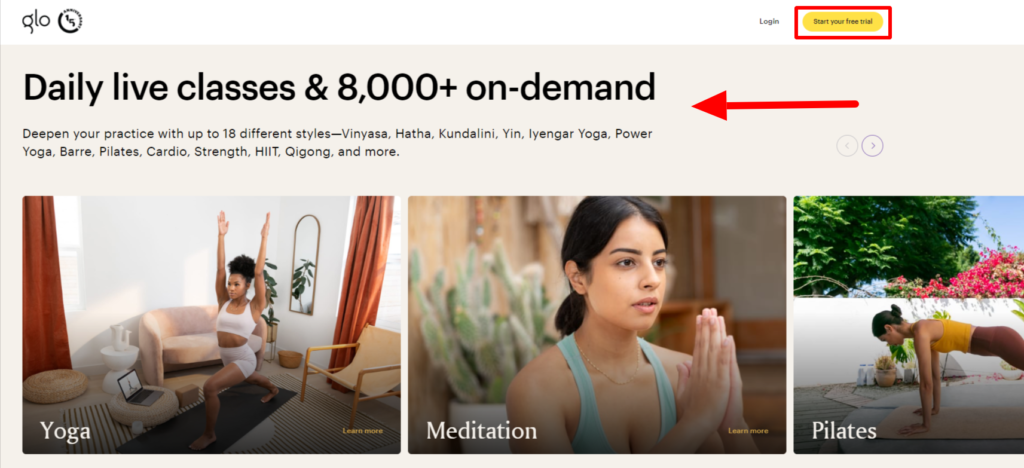
YogaGlo is perfect for maintaining a yoga practice on the go. With a wide variety of classes, from beginner to advanced, you can find something that fits your schedule and skill level. I once found myself in a tiny hotel room in Tokyo, feeling stiff from a long flight. YogaGlo’s short, 20-minute classes were a lifesaver. My tip: download a few classes to your device so you can practice even without an internet connection. It’s also helpful to have a travel yoga mat that you can easily pack.
Sleep Cycle: Better Sleep, Better Health
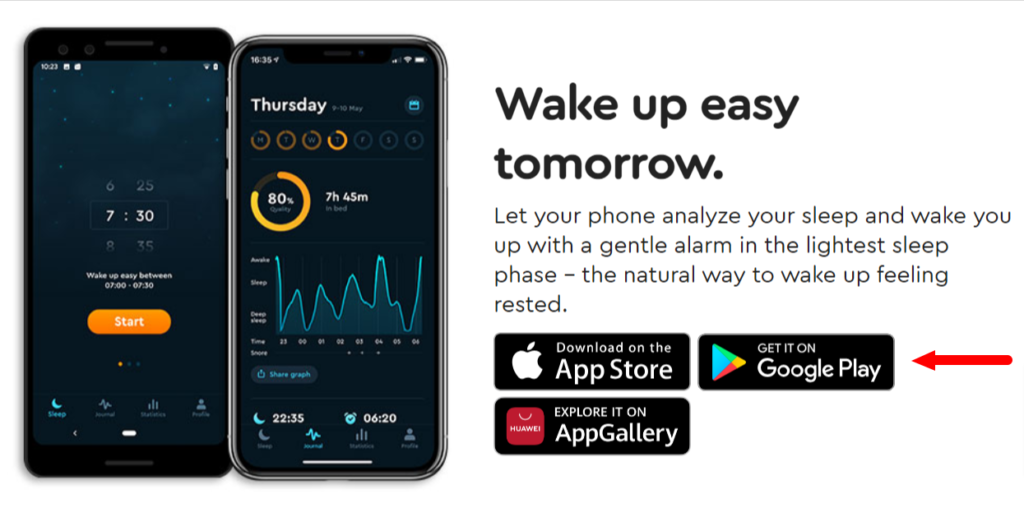
Sleep Cycle is an app that tracks your sleep patterns and helps you wake up feeling refreshed. I started using it when I noticed my sleep quality was suffering due to frequent time zone changes. The app uses your phone’s sensors to monitor your sleep and wakes you up during your lightest sleep phase. One time, I had an early morning flight and was worried about feeling groggy. Sleep Cycle’s smart alarm woke me up gently, and I felt surprisingly alert. My advice: place your phone on your mattress or nightstand for the best results, and make sure to enable airplane mode to avoid interruptions.
WaterMinder: Stay Hydrated
WaterMinder is a simple yet effective app for tracking your water intake. Staying hydrated is essential, especially when you’re constantly on the move. I used to forget to drink enough water during busy travel days, but WaterMinder’s reminders helped me stay on track. One tip: customize your daily water goal based on your activity level and climate. The app also allows you to log other beverages, so you can keep an accurate record of your hydration.
Calm: Relaxation and Sleep
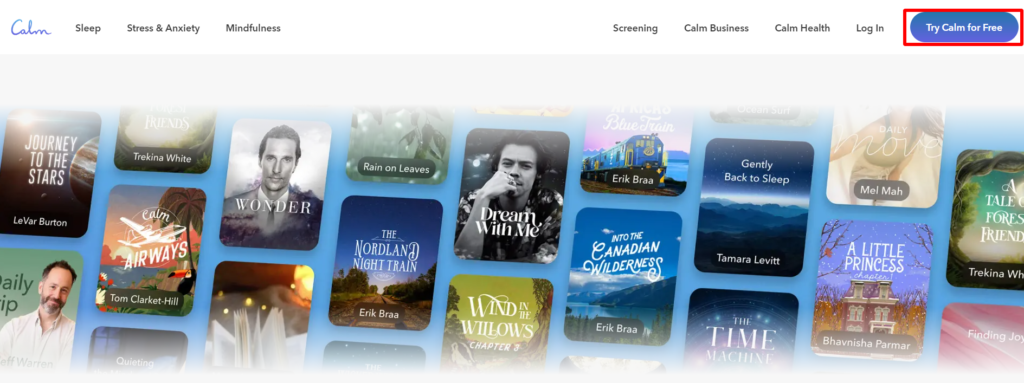
Calm is another great app for relaxation and sleep. It offers guided meditations, sleep stories, and breathing exercises. I used Calm during a particularly stressful project deadline. The app’s “7 Days of Calm” program helped me manage my stress and improve my sleep quality. My tip: explore the different categories, like “Sleep” and “Focus,” to find content that suits your needs. The sleep stories are especially soothing and can help you drift off to sleep more easily.
Strava: Fitness Tracking and Community

Strava is a fantastic app for tracking your workouts and connecting with a community of fitness enthusiasts. Whether you’re into running, cycling, or hiking, Strava has you covered. I used Strava to track my runs while exploring new cities. It was fun to see my routes and compare my performance over time. One piece of advice: join local clubs or challenges to stay motivated and meet like-minded people. Strava’s social features make it easy to share your progress and cheer on others.
The right health and wellness apps can make a significant difference in maintaining your well-being as a digital nomad. Whether you’re tracking your diet, practicing mindfulness, or staying active, these apps have got you covered. Give them a try, and you’ll be well on your way to a healthier, happier lifestyle on the road. Stay healthy and happy travels!
Entertainment and Downtime: Unwind After Work
After a long day of remote work, it’s essential to unwind and recharge. Here are some of my favorite ways to relax and enjoy some downtime, along with a few personal stories and tips to help you make the most of your leisure time.
Streaming Services: Your Personal Cinema
Streaming services like Netflix, Hulu, and Disney+ are perfect for unwinding after work. I remember binge-watching “Stranger Things” on Netflix after a particularly stressful week. It was the perfect escape into a different world. My tip: create a watchlist of shows and movies you want to see. This way, you always have something lined up for those evenings when you just want to relax and not think too much about what to watch.
Reading: Escape into a Good Book
There’s nothing quite like getting lost in a good book. I always keep a few books on my Kindle for those moments when I need to unwind. One time, I was traveling through Europe and found myself with a long layover. I dove into “The Night Circus” by Erin Morgenstern, and the hours flew by. My advice: explore different genres to find what you enjoy most. Whether it’s fiction, non-fiction, or even graphic novels, reading can be a great way to relax and expand your horizons.
Gaming: Interactive Fun
Video games are another fantastic way to unwind. I used to play “The Legend of Zelda: Breath of the Wild” on my Nintendo Switch after work. The open-world exploration and engaging storyline were incredibly immersive. One tip: set a time limit for gaming sessions to ensure you don’t end up playing all night. It’s all about balance!
Music and Podcasts: Tune In and Chill Out
Listening to music or podcasts can be a great way to relax. I have a playlist of my favorite chill-out tracks that I listen to while cooking dinner or winding down for the evening. Podcasts are also a great way to unwind and learn something new. I once got hooked on “Serial,” a true-crime podcast, and found it to be a perfect way to relax and engage my mind. My tip: explore different genres and find what resonates with you. Whether it’s music, true crime, comedy, or self-improvement, there’s something for everyone.
Physical Activity: Move Your Body
Engaging in physical activity is a fantastic way to de-stress. I love going for a run or doing a yoga session after a long day. One time, I joined a local running group, and it was a great way to meet new people and stay motivated. My advice: find an activity you enjoy, whether it’s running, yoga, dancing, or even just taking a walk in the park. Physical exercise releases endorphins, which can improve your mood and help you relax.
Creative Hobbies: Express Yourself
Creative hobbies like painting, drawing, or crafting can be incredibly therapeutic. I once took up watercolor painting as a way to unwind, and it quickly became one of my favorite pastimes. There’s something so satisfying about creating something with your own hands. My tip: don’t worry about being perfect. The goal is to enjoy the process and express yourself.
Socializing: Connect with Loved Ones
Spending time with friends and family is a great way to unwind. Whether it’s a virtual hangout or an in-person get-together, socializing can help you relax and recharge. I remember organizing a virtual game night with friends during the pandemic, and it was a blast. My advice: make time for the people who matter to you. Even a quick chat can make a big difference in your mood.
Finding the right way to unwind after work is essential for maintaining a healthy work-life balance. Whether you prefer streaming your favorite shows, diving into a good book, playing video games, listening to music, engaging in physical activity, exploring creative hobbies, or socializing with loved ones, there’s something out there for everyone. Experiment with different activities and find what works best for you. Happy relaxing!
Summing up The Best Apps for Digital Nomads
The right apps can significantly enhance your digital nomad lifestyle by improving productivity, simplifying travel, and maintaining your well-being. By incorporating these essential tools, together with the right gear, into your routine, you’ll be better equipped to handle the challenges of remote work and travel. So, download these apps today and take your digital nomad experience to the next level!
Happy travels!





